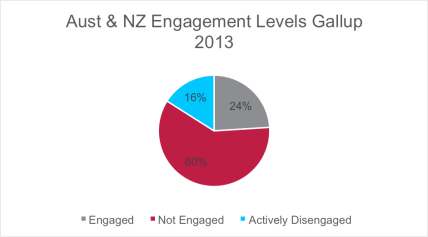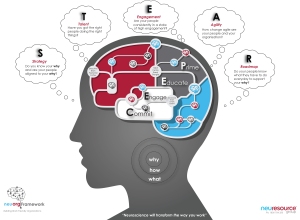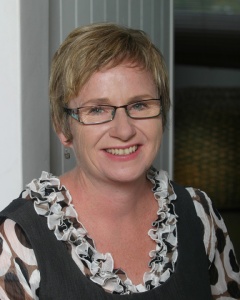How does your engagement measurement stack up?
In this post, Linda Ray, co-founder and co-director of neuresource group, shares our tools for building a high performing organisation with a sustainably engaged workforce.
According to Gallup’s 142 country study on the State of the Global workforce only 13% of employees worldwide are engaged at work http://www.gallup.com/poll/165269/worldwide-employees-engaged-work.aspx
Whilst Australia and New Zealand are above the world average at 24% measured as engaged, there is clearly room to improve given 60% are identified as not engaged and 16% as actively disengaged.
We know that when people are not engaged they lack motivation and are less likely to invest discretionary effort. Those actively disengaged negatively impact on co-workers through emotion contagion. Many organisations measure engagement via the once per year survey and then spend a couple of months analysing the data. Clearly we need to do something differently. The reality is we used to talk about morale but engagement comes largely from inside of us and is influenced by factors outside of work. Financial stress and increasing pressures to do more with less impact on engagement. We also know that leaders influence the engagement climate as do business practices.
There are recognised keys to operating as a high performing organisation with a sustainably engaged workforce. We did a lot of thinking about this and have been influenced significantly by insights from neuroscience, particularly the ideas that the key organising principle of the brain is to minimise threat and maximise reward and the notion that the brain is a social organ.
In our work with businesses we share Simon Sinek’s Golden Circle model and consistently find that, while organisations can talk about their ‘what’ and ‘how’, rarely have they clearly articulated their ‘why’. Most organisations and businesses mistakenly believe their ‘why’ is captured by their mission statement. When your people buy the business ‘why’ and feel connected to it, they will be more motivated to put in discretionary effort. We do a lot of work with organisations to help them think through and articulate a shared ‘why’. We use a simple model in our work called the STEAR model.
In the STEAR model there are 5 key areas to pay attention to.
The first of these is to understand your strategy. Do you know your ‘why’ – why you do what you do – and are all the people in your organisation aligned to your’ why’? It is the purpose of the business and it is not about what you do but rather why you exist.
The second area is looking at the talent of your people. Have you got the right people doing the right things? We know when you can align people’s natural talents with things they like doing they will be more engaged. Do you have a development strategy for growing the capability of you staff?
Are your people consistently in a high state of engagement? Do they love what they do? Do you have practices that measure engagement regularly?
We are in a time of constant change. Times of change require us to demonstrate agility in order to prosper. How change agile are your people? What is your plan for managing change fatigue?
Finally we all need a clear roadmap. Do your people know what they have to do everyday to support your ‘why’? This links back to your purpose and your strategy. A leader/business owner needs to be mindful of all of these areas.
Focussing attention solely on the engagement, in isolation from the other key components that impact on engagement, is unlikely to change the levels of engagement.
In earlier blogs we have shared our 3 E’s model. We are using our platform Neu360 which supports a business to do quick pulse surveys to check in with their people to determine engagement ‘hotspots’. This is much more effective than the once a year survey and may mean we can intervene in a much more timely manner to address any issues that may be resulting in low morale and low engagement. What are you doing in your business to support engagement? How are you STEARing your organisation and are you paying attention to all of the areas that support a high performing organisation?
Linda is the Managing Director of NeuroCapability and the co-founder/director of neuresource group. These organisations are playing key roles in developing a new generation of thinking leaders through delivery of the Diploma of Neuroscience of Leadership and other innovative programs informed by neuroscience. Linda is gaining recognition both in Australia and internationally as a thought leader in the neuroleadership field. She is actively contributing to the body of knowledge that supports the building of individual and organisational ‘neurocapability’.



Leave a comment